An estimated 11.5-million clams washed up on Robberg Beach in Plettenberg Bay recently, covering 5 875 square metres of sand.
The Nature Valley Trust (NVT) Marine Team, a marine research and conservation NPO, shared a statement on social media, saying that it’s not the first time a mass clam wash-up has happened in Plett.
‘Over the past week, Robberg beach has experienced a mass washout of clams… As residents may be aware, these clam washouts have become somewhat of an annual event in recent years, leaving scientists seeking answers.’
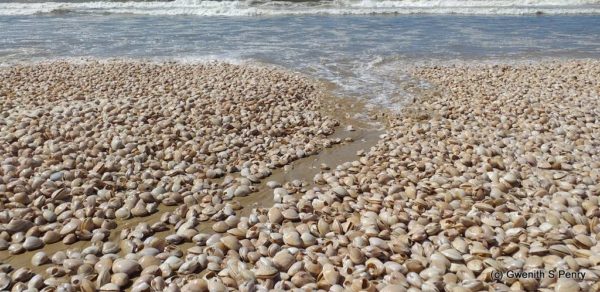
Although the yearly occurrence is mysterious to researchers, the NVT Marine Team believes that it may be due to several factors.
‘The most plausible reason is that strong easterly swells and winds cause a large disturbance in the sand banks in which these clams usually reside. The turbulent water movement may prevent the clams from being able to burrow back and thus become subject to wave action and consequently wash out onto the beach.’
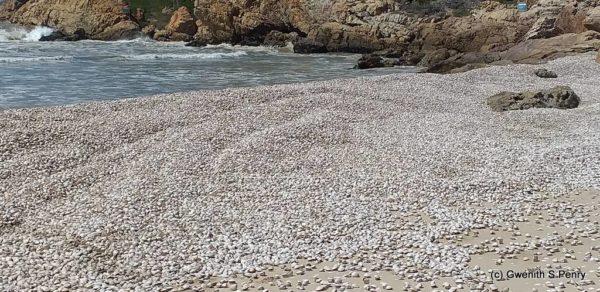
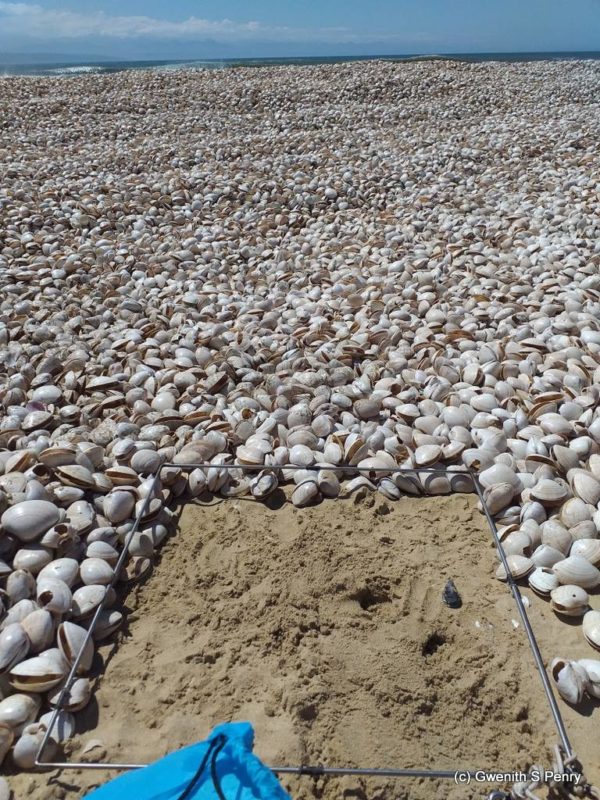
NVT Marine Team admits they still have no answers as to why there are ‘so many clams in the area and why these strong winds are now causing them to wash out’.
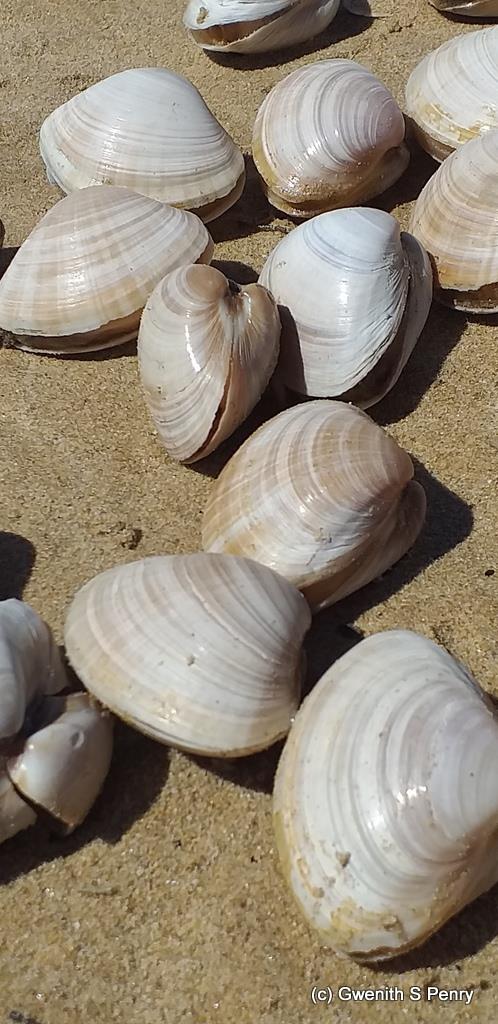
On 13 March 2019, the NVT Marine Team and SANParks Marine ecologist, Kyle Smith, carried out a survey to collect data on the clam wash-up and measured the area covered by the molluscs. Through his data and calculations, he found the estimated number of washed-up clams to be 11.5-million.
‘This obviously creates an enormous amount of protein available for scavengers to feed on,’ he says.
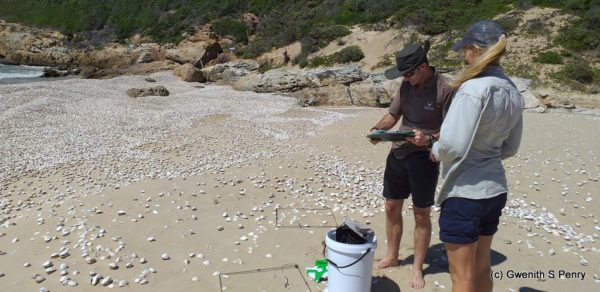
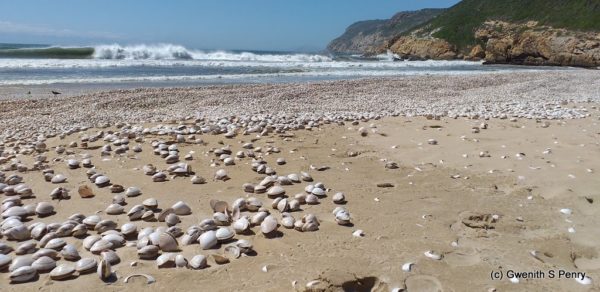
Picture: Gwenith Penry, Facebook, NVT Marine Team

